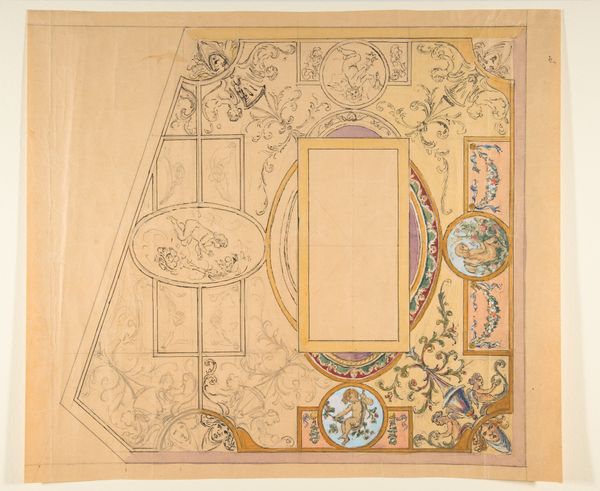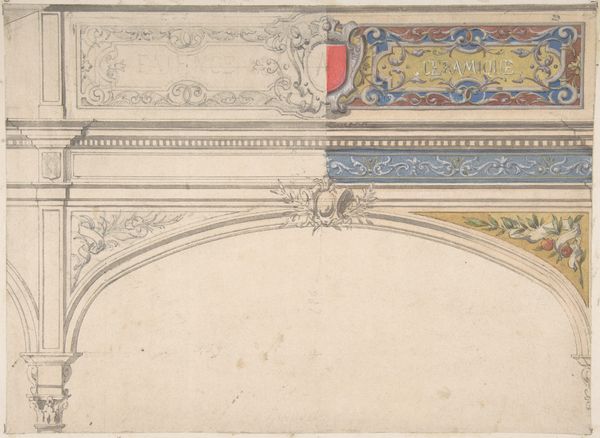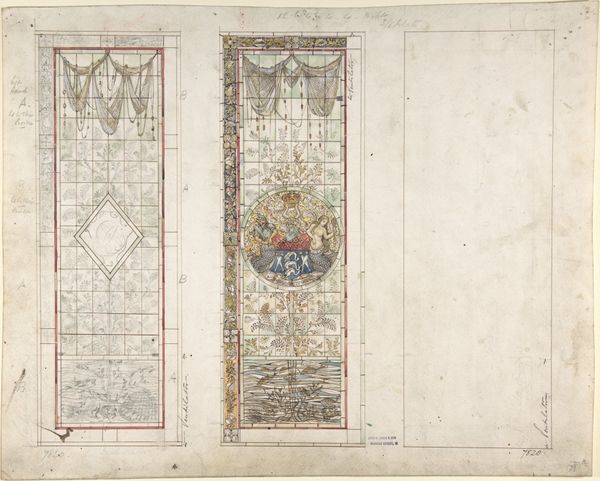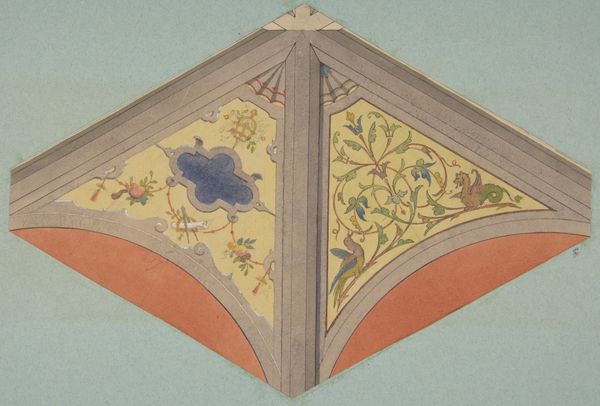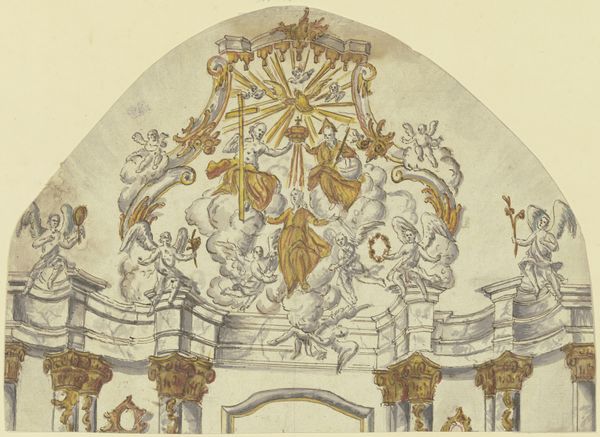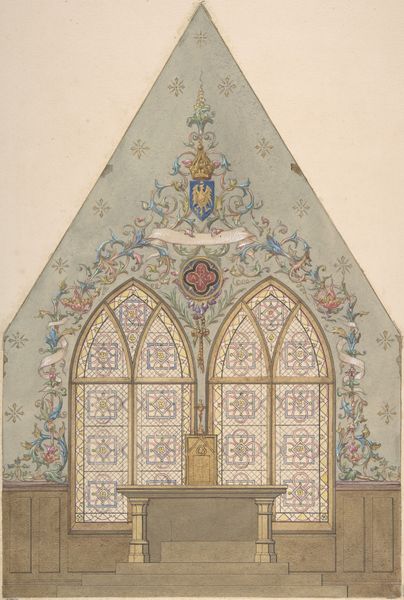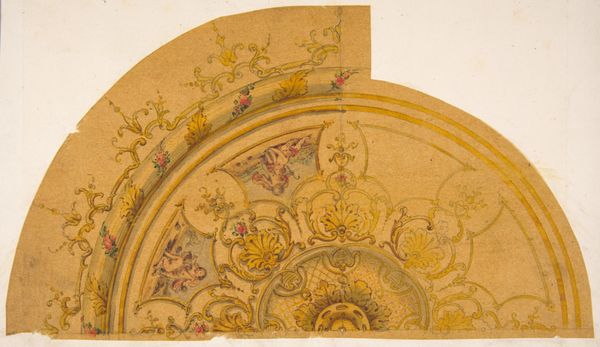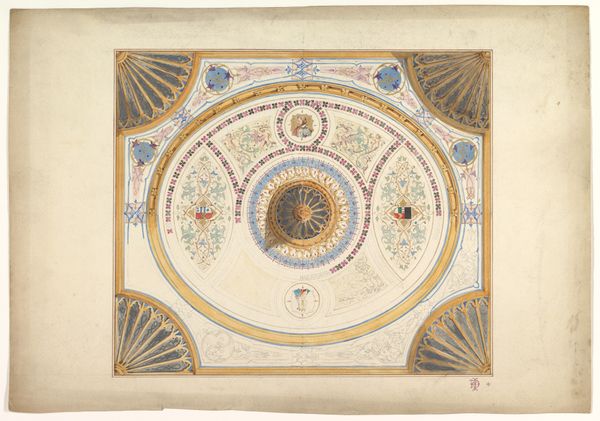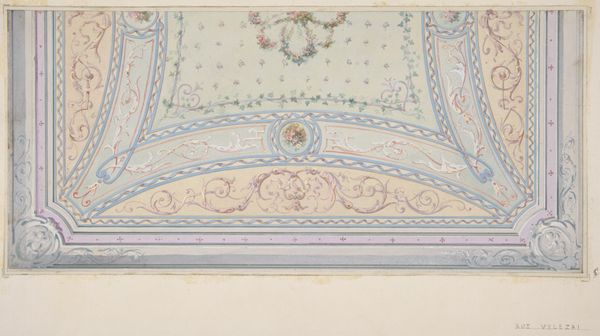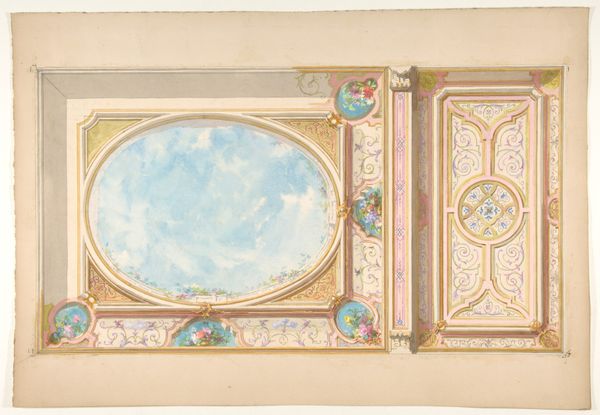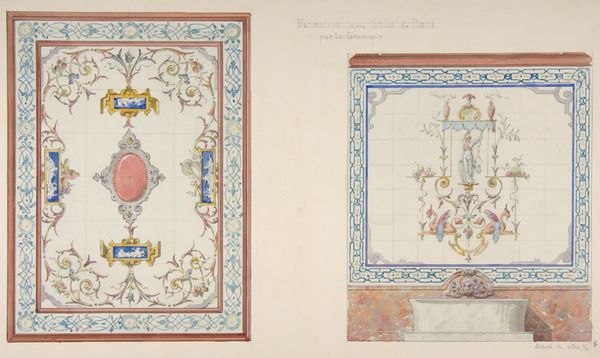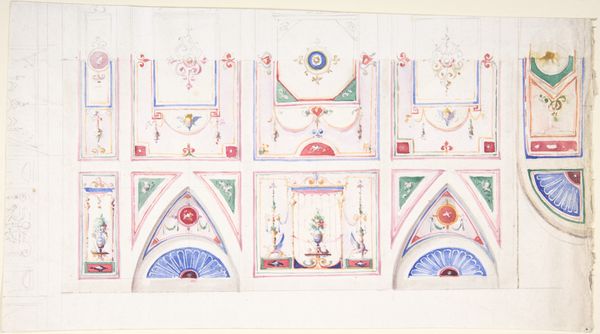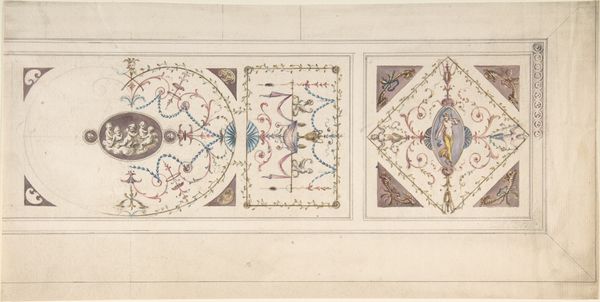
Design for the Interior Cupola of a Domed Chapel, Farnborough, England 1880 - 1886
0:00
0:00
drawing, architecture
#
drawing
#
historic architecture
#
traditional architecture
#
history-painting
#
watercolor
#
architecture
Dimensions: 13 9/16 x 18 13/16 in. (34.4 x 47.8 cm)
Copyright: Public Domain
Curator: Here we have Jules-Edmond-Charles Lachaise’s, "Design for the Interior Cupola of a Domed Chapel, Farnborough, England," created between 1880 and 1886. It’s currently held here at the Metropolitan Museum of Art. Editor: It’s breathtaking, really. The pale green washes, the glints of gold. It gives the sense of looking up into a jewel-encrusted sky. But the drawing itself – the materiality – looks delicate. I wonder how durable these colors and that paper would prove to be? Curator: Well, it is just a design, so its immediate purpose wasn't necessarily permanence, but rather as a template and presentation tool for the patron, Empress Eugénie. Farnborough Abbey, you see, was a pet project after the death of her husband and son. Editor: Ah, so this design reflects both personal grief and dynastic ambition. I'm particularly drawn to how the watercolor rendering affects our understanding, contrasting the opulence one might expect in such a space with what looks to be relatively modest or restrained artistic rendering in tempera or watercolor. The means of producing these types of devotional pieces and spaces are important for us to note. Curator: Precisely! It gives a behind-the-scenes peek. And consider the larger political context: The Empress in exile uses architecture and art to cement a particular historical narrative around the fallen Second Empire. The architecture becomes part of her personal and political statement. Editor: So, the artwork in this drawing serves as both object and social tool, as a way of broadcasting the cultural influence across the history of the Second Empire? It all folds into the visual symbolism deployed throughout the commission and how architectural spaces, themselves, are involved in historical narrative construction. Fascinating. Curator: It is indeed, the work really draws you in when you consider how each design decision fits within larger socio-historical constructs, like architectural space or power relations. Editor: I agree. Viewing "Design for the Interior Cupola," now allows me to think of labor and its importance to architecture of that scale with entirely new questions, which has offered up new ways to perceive buildings and spaces of religious gathering.
Comments
No comments
Be the first to comment and join the conversation on the ultimate creative platform.
